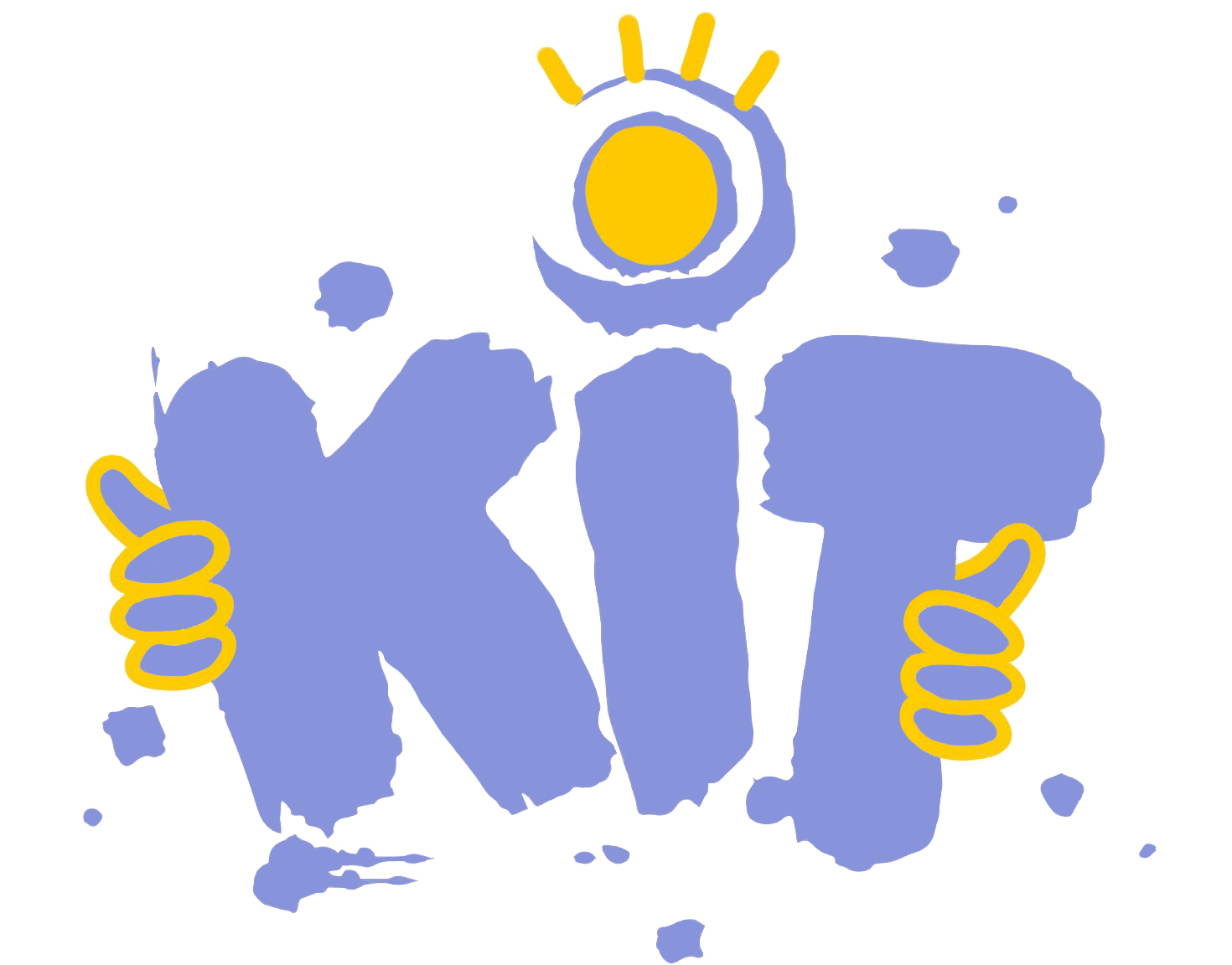E-learning Modules > Module 1 > Lecture 1
Children statistically have first contact with digital devices at the age of one year.
Therefore it is important for parents and educators to serve as role model and to lay the foundation of media competence early on in order to help children growing up with and navigate the possibilities of digital media while avoiding any pit falls.
In kindergarten, children can actively and cooperatively learn about the creative potential of digital media. This offers many new possibilities for expression and design, in teamwork with other children in a safe environment.
Function of digital tools in media projects with children in Kindergarten
Having digital resources at hand in Kindergarten is an important way for gathering information, communicating, organizing, processing data and for many more possibilities. Digital media allow children to learn with new tools about science, artistic expression, written language, mathematics etc. While implementing technical means children can change from consumer to producer (taking pictures, researching, recording). This role switch helps to stretch out perspective on reality and to gain knowledge.
This overview includes different topics in media education, aspects of various digital devices and 4 central fields of action for the use of digital media in kindergarten. This way children learn to understand media through actively creating with media.
- Make media a topic to talk about – gallery of media heroes/heroines
- Photography – taking pictures with a theme
- Audio – play with audio
- Film – magic camera tricks
Learning goals in this session
- To recognize different digital media devices.
- To have an overview of different kinds of media projects you can put to practice in kindergarten.
- To know which digital tools are necessary to take a photo, record audio and video material.
- To find and use different apps for creative media work with tablets with children.
- To practice creative media work with mobile devices and apps to build confidence.
Download the full lecture in PDF:

Safe use of digital tools in Kindergarten
Digital tools and generally media have many positive aspects. They also include risks which should be taken into account in order to provide protection for children. The following rules are recommended:
Setting limits
Indicate to children and their families that there are limits and rules agreed upon fort he use of media
- Agreements should be negotiated at the start of using media according to age and developement of the children in question.
Internet Safety
Adults need to explain the risks and possibilities related to new technologies as well as the internet.
- A search engine specifically for children can be used for research
- Switch off any cloud storage. Save data locally on the device and eventually transfer to a computer or safe server.
- Mobile devices used by children should be in airplane mode/ offline as often as possible to minimize radiation, advertisement in apps as well as prevent in-App-purchases.
Responsibility
Adults supervise the use of digital tools by children and work in safety mode.
- Adults are role models for how to use media and should be aware of that when handling media in the presence of children.
- Children use digital devices accompanied by adults and at best together with other children.
- Any media and apps for children are carefully chosen and app settings for installation checked. Unnecessary rights are switched off in the settings.
- Technical accessibility can be applied to further limit the use of apps. (For example to momentarily allow only one app use „guided access“ in IOS and in Android „pin window“).
- Mobile devices are secured with a PIN only adults know.
- For mobile devices and accounts technical security settings are available to enable further restrictions and youth protection (for example screen time in iOS and Digital Wellbeing in Android).
Tutorials
Some practical examples show how digital educational activities can be successfully designed with children, they can be implemented in everyday teaching and in small projects. Watch the video tutorials and follow the instructions. Get some ideas for media projects with children in kindergarten.
Smile Safari
Audio riddle
Walk through the wall using the stop trick
Workshop
Try out media work yourself and create new audio, photo, and video projects for children. Use a learning-diary to document your working process. Here you can find an example of a learning diary.
Download the PDF.
First Steps:
Task 1: Ask the children to draw pictures of their media heroes. Write down the explanations. Create a gallery on the wall for sharing.
Task 2: Make 5 photos from things with a funny smile. Create a photo-collage on one page and print it out.
Task 3: Record 5 different sounds in the kindergarten or at home and create a fun audio riddle.
Task 4: Use the stop-trick to film 5 children disappear through the wall or in a big cardboard-box.
Quiz
Test your knowledge about How to use media and the tutorials, e.g., media devices, different kind of media projects and creative media making with children.
Quiz-Make media a topic to talk about
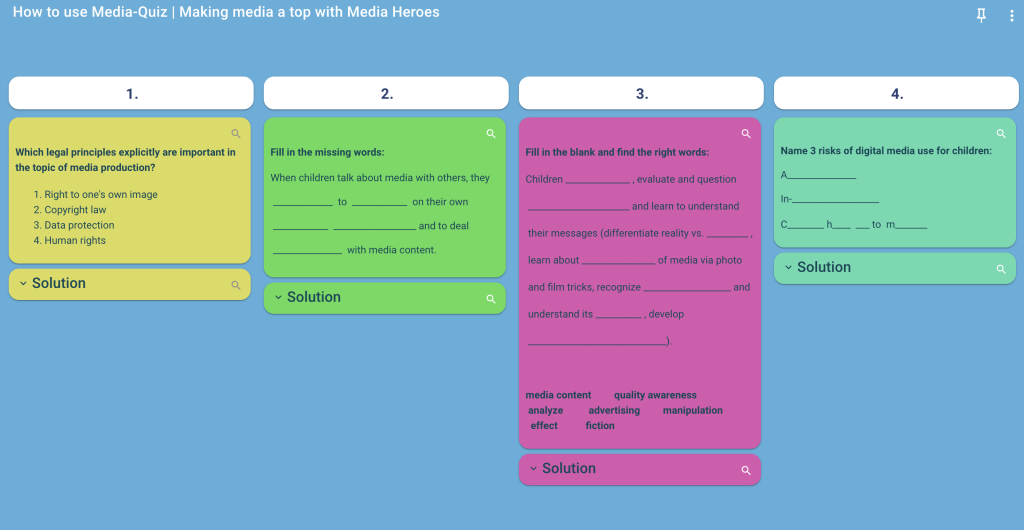
Quiz-Photography
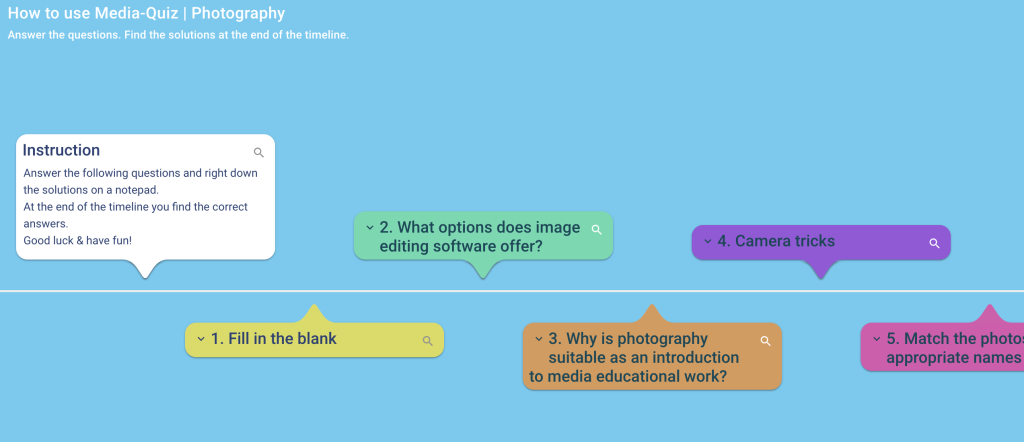
Quiz-Audio
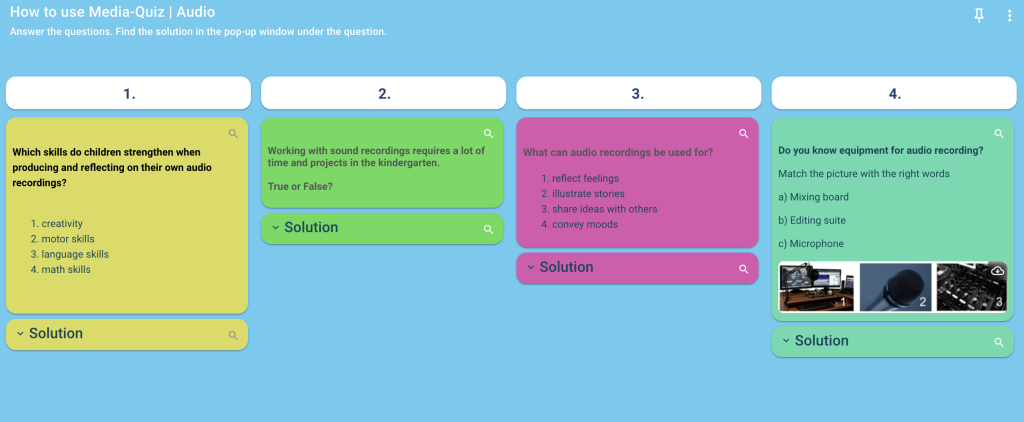
Quiz-Film
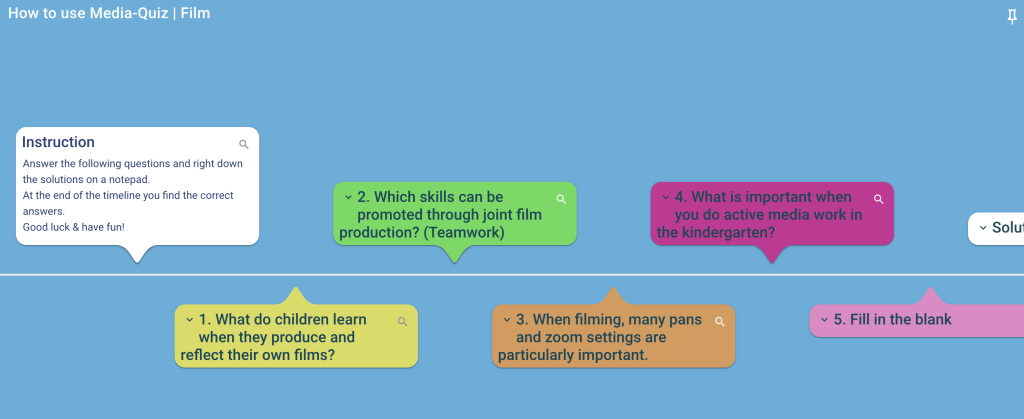
Questions for reflections
Deepen your learning process and use these questions to reflect about media use and awareness. Maybe discuss these questions with co-workers and educators in kindergarten.
Download the PDF with the questions.
Making media a topic to talk about
- Which media heroes did I have as a child? What was special about them?
- What were the media rules in your childhood? Who set them?
- Which advertisements appeal to you in particular? What makes them stand out?
- How confident do you feel about the legal requirements like data protection, right to one’s own image or copyright?
Photography
- How do I use photography privately?
- What role does photography play in our everyday educational life?
- With what aim do we use photography?
- When and where can I involve children in photography?
- What are the rules for photography in our kindergarten?
Audio
- What role does media play in my private everyday life?
- What effects does film music have on my experience of a feature film?
- What were my favourite stories as a child to listen to? Why?
- What role do audio productions play in our everyday educational life?
- When and where do we offer children the opportunity to make audio recordings themselves?
Film
- What is my TV usage behaviour like?
- What is my favourite film and why?
- Who / what is my TV hero? What defines him / her / it?
- What impulses do I need to create a story of my own?
- What does it take to start a film project with children?
Additional Materials
For further information and more learning content use additional material, for example:
